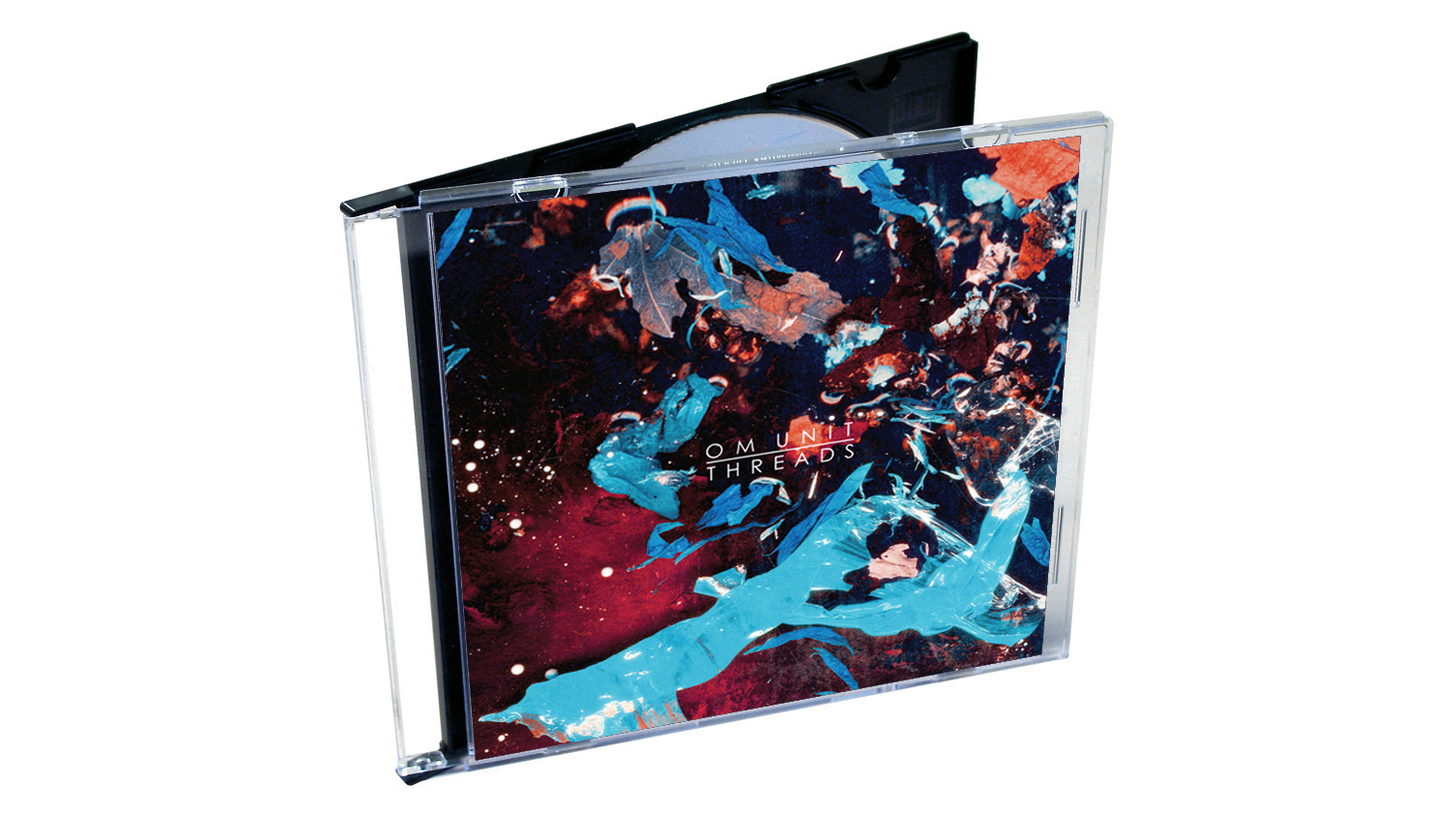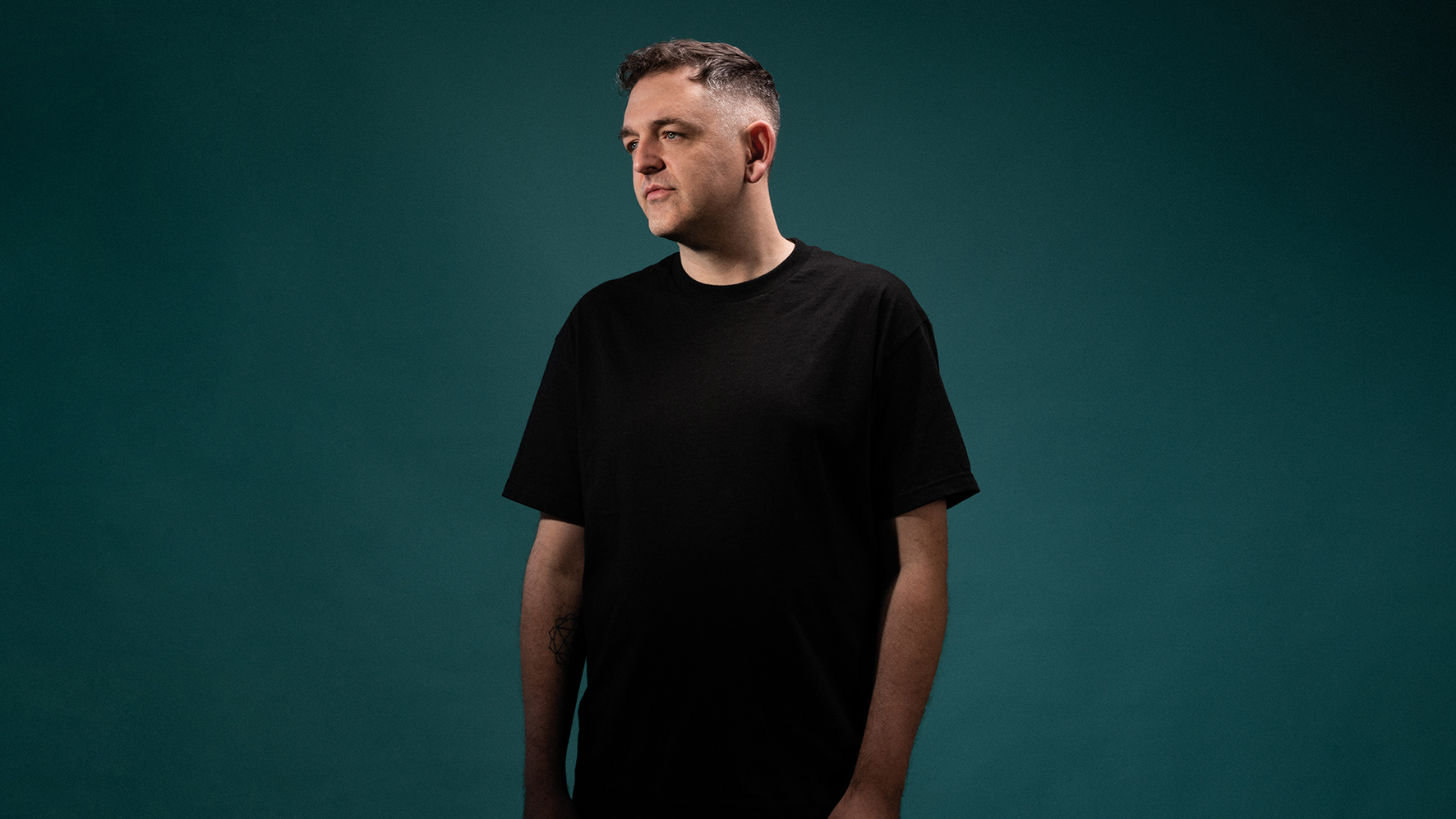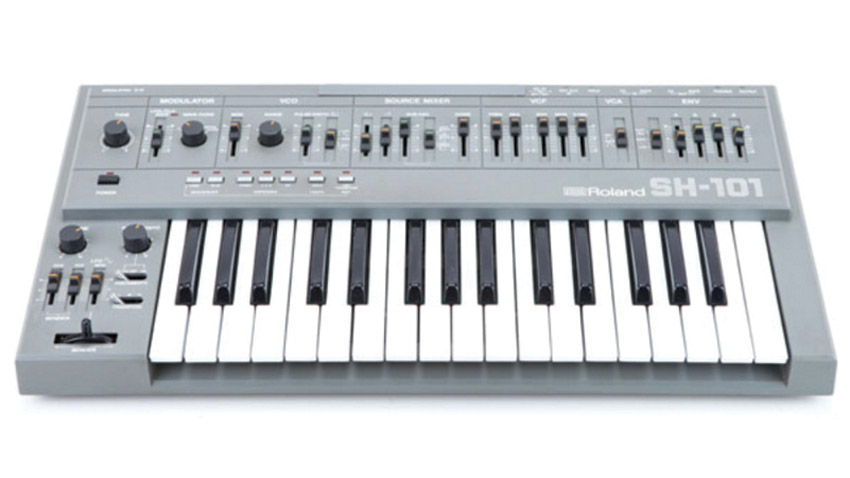Classic album: Om Unit on Threads
Om Unit unravels the non-conformist DnB of Threads, his 2013 album that fused dubstep, jungle, and garage rhythms with progressive beatmaking and grandiose sound design

Tucked away in his bedroom studio in Tulse Hill, right by the station, the man known as Om Unit is deep into production on his landmark album.
Sewing up styles and cross-stitching dance music, he would weave up his own unique audio tapestry. And, as the LP title suggests, the sublime selection was hand-crafted from a sonic strands of all his favourite sounds.
“I had all these threads of musical interest that I wanted to draw together and create a convincing blending of ideas,” he says.
Inspired by the hip-hop he’d made in the ’00s as 2tall, and modern ‘bass music’, he began to approach his own strain of DnB in a non-conformist way. And by blending up huge sub bass-centric dubstep, jungle, and garage rhythms with progressive beatmaking and grandiose sound design, he managed to make beautiful music all of his own.

“I didn’t want to sound like another Amon Tobin or Flying Lotus,” he says. “Threads stood fairly alone at the time, in its own humble way.
“Tracks like Jaguar were groundbreaking. The use of dubstep basslines in minimalist footwork-inspired beats wasn’t heard of back then. And tunes like Wicker And Pearl were mad. I thought people might hate it, but it had the opposite effect.”
He was challenging himself in his production, and it paid off. Drum time signatures, bass tone crafting, and playful top-line melodics were all scrutinised under his microscope, and chopped up with scant care for convention.
Get the MusicRadar Newsletter
Want all the hottest music and gear news, reviews, deals, features and more, direct to your inbox? Sign up here.
“I remember at the time feeling that what I was doing felt a bit ‘naughty’. As if I was breaking some concept of other people’s rules. I was just really trying to challenge myself.”
The album is now about to turn ten. And, looking back, Om Unit is still motivated to remain resolutely individual in his approach to music-making.
“Since Threads I’ve striven to maintain that same ethos of not being tied down to any one thing and try to remain free as an artist,” he says. “And I’m pleased to say that we are looking at a reissue and remaster of Threads to come in 2023, so watch this space!”

“The studio at the time was my bedroom in Tulse Hill. I was working on an old PC that was falling apart, and Cubase. I had an RME Hammerfall DSP interface and was running Mackie HR824 Mk1 monitors after hearing them at Alix Perez’s studio. I think the midrange wasn’t so honest, but they are really ‘vibey’, and really suited the space in terms of acoustics.
“I had my trusty Access Virus B and a Roland SH-101 and a Juno Alpha for outboard synthesis. I used NI Massive and Battery 2 a lot at the time as well as the good old Sylenth1 plugin which was my go-to subtractive mainstay synth for many years until Serum turned up.
“I was really into printing audio of a lot of tracks and I spent a long time re-processing a lot of the synth and drum work on the album in order to bring out a certain character. I was really beginning to learn about saturation after being schooled on using iZotope Trash.”
Threads, track-by-track with Om Unit
1. Folding Shadows
“This I knew was the ‘intro’ track, and it’s kind of picking up where I left off from with my early work on Cosmic Bridge and the Civil EPs where there’s this kind of LA Beats scene influence there. But, I wanted to create a grand statement of arrival so I spent some time working on these synth counterpoints to the original simple melody I’d written.
“I also wanted this drum palette that sounded like ’80s hip-hop but done in a Kraftwerk meets J Dilla sort of way. I think it was actually the last track I made for the album.”
2. The Silence (feat. Jinadu)
“I spent ages writing the bass. I was trying to break the habit of doing the same old harmonies, and it created some interesting counterpoints to pivot off of the more complex orchestral strings.
“I really built it around the vocal. Simon [Jinadu] recorded 20 takes over the long bridge, which I used to build up in these vast layers with lots of subtle synth which lead into this second drop, which was all added after the vocals were recorded.
“I spent a long time getting the right balance. It took the most time of all the tracks of the album.”
3. Healing Rain
“It’s a spiritual track and expresses a hopeful melancholy, I think. I’ve always been interested in emotional healing work and popular psychology as well as some degree of spiritual practice, so this was something of a moving piece.
“A lot of the melodies are my own, but there are some samples of ney flute or similar that I chopped. At the time I was almost unable to make anything without adding natural sounds, which added that feeling of anticipation and release when a storm arrives. I would close DJ sets with it.”
4. Jus Sayin (feat. Gone The Hero)
“This beat came out of a batch of things I made while sampling from New Age records I picked up in the US, on tour. I went ‘ham’ on bringing back these bargain bin records with weird synth and folk instruments.
“I just wanted to create these massive, impactful basslines that were just long held notes, influenced by DnB and grime and my work with Kromestar on Cosmic Bridge.
“The bass was from the Access Virus, and the drums were heavily processed 808s.
“Jneiro Jarel [Gone The Hero] recorded his vocals in New Orleans, and I just added a few touches and it was done.”
5. Drift Interlude
“The movie Stranger In Paradise really spoke to me in my 20s. I’m a big fan of Jim Jarmusch’s movies and this idea of being a drifter really appealed to me.
“The idea of not wanting to get bored with the same old scene has been critical for my artistic survival, and the short quote that I used speaks to that.
“It also, however, displays the shadow-side of that sentiment where there’s a resistance to stability which gets old over time. Looking back I can see a youthful ignorance in that sentiment. Nevertheless, there’s something romantic about it which sits with me at times.”
6. Reverse Logic
“I was surprised when Doc Scott played this on his Future Beats show amongst the DnB, even though it’s 4/4 (apart from the chopped Boymerang breakbeat, maybe).
“It’s a really simple, groove-based thing. And, in my head, it was a kind of ‘slow-fast’ take on house music. I was into the idea of ‘slow-mo’ house/chuggers and I still am really, to be honest. And I wanted to see if I could inject a bit of that DnB energy into that feeling.
“Production-wise, it’s quite basic and straightforward – it’s just a groove, some filtering and automation, and a B-section.”
7. Corridor 2013
“The Corridor was effectively an early cosmic disco/beats/downtempo Om Unit track.
“This version is me taking the original and re-purposing it into something more functional in the ‘slow-fast’ style I was curious about at the time.
“I started using the term ‘slow-fast’ based on a Boomkat review of one of my Civil Music EPs. I liked the idea of a slow on the bottom, fast on the top (in terms of frequency) functionally. That’s what drew me to footwork and jungle, so I was curious about how to reinvent one of my classic tracks in this fashion.”
8. Nagual
“This title is based on the idea of the nagual from Carlos Castaneda’s books. It’s someone who could shape-shift into animals. And also an alternative state of awareness, or a ‘second attention’. I just love this concept and somehow this felt apt to apply to this track.
“I am not entirely sure why, looking back, but perhaps it’s because it continuously evolves into a different space.
“I love the arrangement of this, especially the breakbeat section. I really wanted to include some 140bpm breakbeat stuff in the album somewhere as I’ve always been a fan of the more classic sound of breaks.”
9. Patients (feat. MC Jabu)
“MC Jabu’s voice captivated me via the early Young Echo podcasts. I loved the poetic sentiment, and the humour he was delivering at the same time. I felt I’d finally heard an MC with his own thing going on in the UK that was expressing something in an unashamedly stylish way totally outside of standard UK hip-hop style.
“I had to ask him to work on something with me, and this was the result. It’s incredibly cerebral and nervous-sounding which encapsulated the cerebral intensity I felt at times back then, perfectly.”
10. Deep Sea Pyramid
“This is a homage to Drexciya. It’s an escapist track, and focuses on this idea of exploring ancient temples and pyramids, under the sea.
“I was really getting into Graham Hancock at the time and I was fascinated by the idea of ancient civilisations, potential UFO contacts, and other weird and wonderful esoteric theories about the origins of modern civilisations.
“I love that Drexciya had found a way to mythologise how they felt about their struggles, and I’m a life-long fan of the music, so this is my small homage to the underwater legends, as well.”
11. Wall of Light
“This is inspired by the documentary, Ships of Light, by Carlos Diaz, where he talks about his interactions with beings from other worlds. I loved this idea of a wall of light, and the whole mystery of it.
“I was really into carving out bass into these rhythmically jerky patterns, as well, using automation. And I wanted to create something very meditative. And added to that, I think at the time I made this, it made me imagine this wall of light that Diaz mentions at some point in his accounts of his E.T. experiences.
“It’s something of an imaginary soundtrack to that experience.”
12. Jaguar
“This track made me think of the elite warriors in Aztec culture, that were called the ‘Jaguar Warriors’. Why, I’m not sure, but I felt drawn to this idea of something dark and war-like for this.
“To me, it’s another imaginary soundtrack, but this time of a predatory hunt or a skirmish.
“That kind of ‘tribal’ feel to it to me speaks of a ritualistic mode of consciousness that I’ve tried to channel into a track designed for sound systems as an intense and meditative ritualistic dance.
“I still don’t know why I was drawn to this theme, but it felt necessary, somehow.”
13. Wicker and Pearl
“This is what I called ‘quarter time’ in a DnB sense. Something like a half of a half, in terms of the rhythmic structure at play.
“I wanted to take the dancehall feel that some DnB tracks have, but cut it in half again and use some of the more modern techniques of bass sound design, but at the same time keep this really open top-end that has room to ratchet around.
“It’s me thinking more like a drummer, where the bass is a big part of the rhythm. Almost like another percussive instrument, in a techno way, but more junglistic.”
14. Governers Bay
“This was made in the iconic spot in New Zealand of (almost) the same name. I was out touring, staying at this beautiful spot that was overlooking this giant bay, and that was the inspiration for it.
“I was really getting into the idea of creating this half-time rolling feel with drum breaks, and I was trying to keep a sense of the meditative bottom end, and wanted to inject some of my simple melodic top lines, which I think are very much inspired by the early Logical Progression records as much as by cosmic disco and soul music.
“It’s a meeting of styles, like a lot of the LP, and used to get a great response in the club.”
15. The Road (feat. Charlie Dark)
“Charlie Dark steps in at this point. Charlie is a legend. I had asked him if he would like to contribute a poem and he obliged. This is him talking about life’s journey and the struggles of being consistent.
“I feel it like spoke to a future me at the time, and sometimes the words on this still echo in my mind as lessons that I carry with me even now.
“In terms of production, I was really excited by approaching the idea of slightly trap-based tropes, but using a much more transcendent, almost folky overlay, with some Japanese drumming in there to boot, along with lots of layers of Access Virus synth jamming, and shedloads of reverb. One of my favourites from the LP, for sure.”
Visit Om Unit's Bandcamp for new tunes, vinyl, merch and more.


"At first the tension was unbelievable. Johnny was really cold, Dee Dee was OK but Joey was a sweetheart": The story of the Ramones' recording of Baby I Love You
"Reggae is more freeform than the blues. But more important, reggae is for everyone": Bob Marley and the Wailers' Catch a Fire, track-by-track









